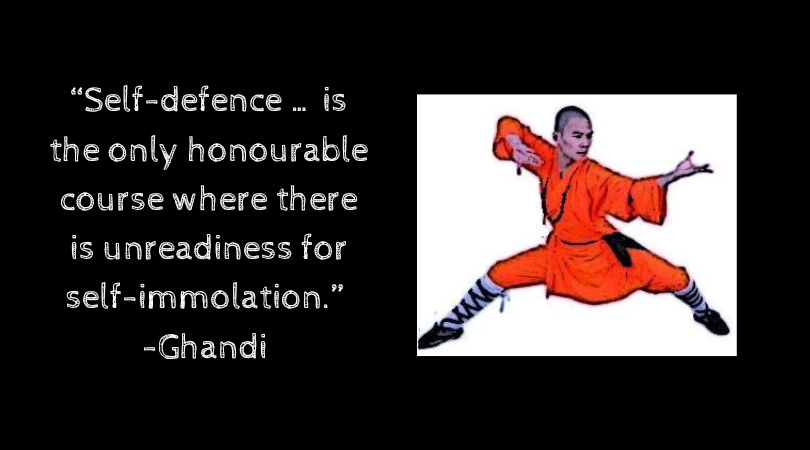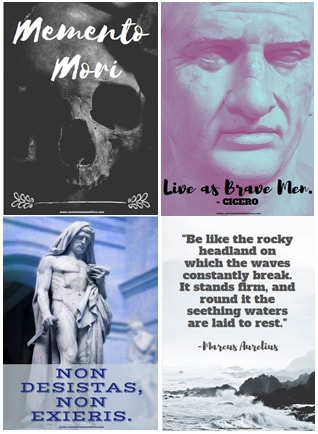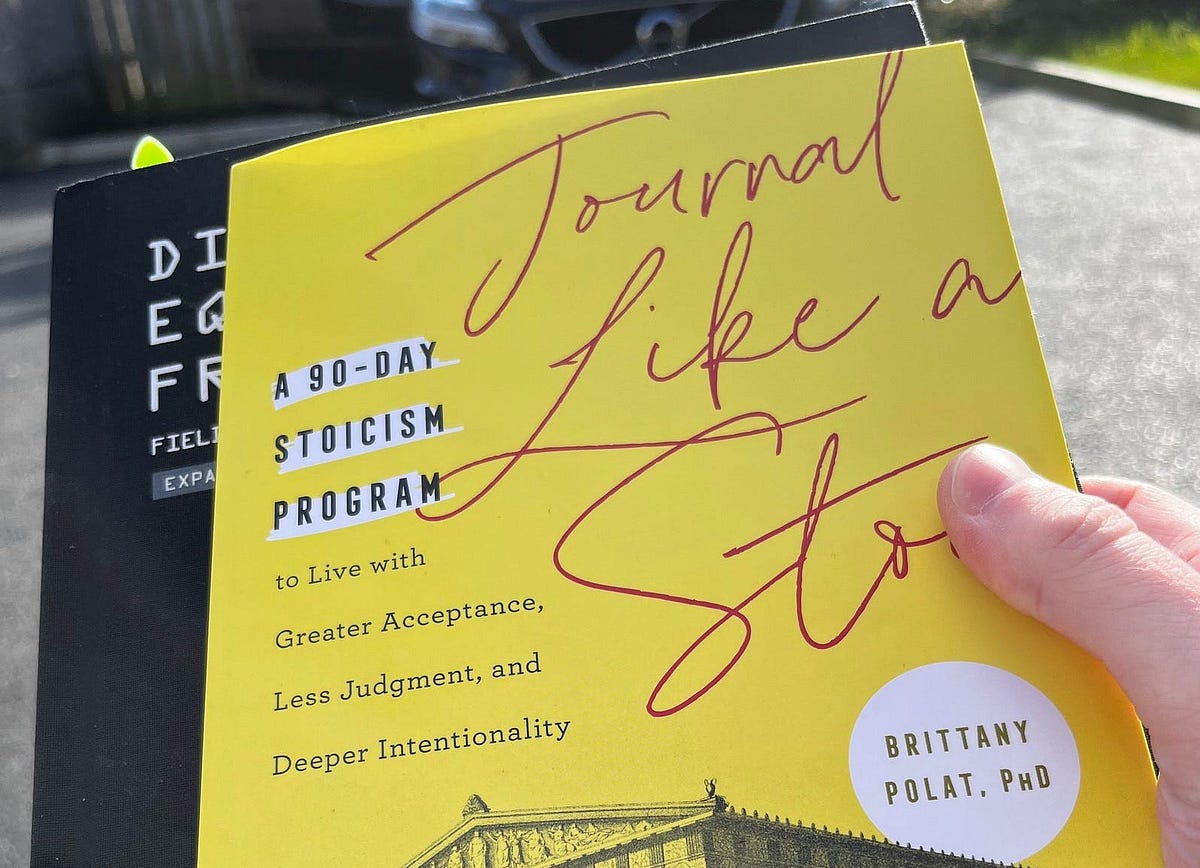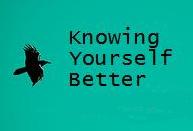This post provides a deeper examination of the ethics of violence and self defense.
I explain why neither pro-aggression positions or naive pacifist positions on the ethics of violence are ideal, and I posit a third approach, non-aggression, which I argue is the most ethical. When properly understood, non-aggression and forceful self-defense are not morally incompatible.
A corollary is that Most Westerners who believe in extreme pacifism when it comes to individual self defense do so naively. Very few people, even some thinkers credited with advocating for extreme pacifism for political purposes, actually believe in it on an individual level. A careful study reveals that Thoreau, and Martin Luther King, and at least one Buddhist sect, advocate individual self-defensive force as moral, necessary and courageous. Even Ghandi, who is not typically a reasonable pacifist, has moments where he admits to the necessity of self defense for individuals, particularly for those who aren't spiritually committed to self-immolation as he is.
This makes sense, of course, because the need for self defense will persist until everyone in the world non-aggressive. Therefore, the most pragmatic and ethical position is one of conscious non-initiation of violence, which at the same time does not preclude forceful self-defense if necessary.
Violence |
The etymology and definition of the word violence, reveal a much narrower definition, more synonymous with “aggressive force.” Violence comes from the Latin root word, violentia, meaning vehemence or impetuosity. In Old English and Anglo-French, violence explicitly meant "physical force used to inflict injury or damage." Dictionary.com, defines the word violence in the following ways:
1. the use of physical force to harm someone, to damage property, etc.
a : exertion of physical force so as to injure or abuse (as in warfare effecting illegal entry into a house)
b : an instance of violent treatment or procedure
c : injury by or as if by distortion, infringement, or profanation : outrage
2. great destructive force or energy: The violence of the storm caused great fear.
Several of these definitions of violence imply aggressiveness, through the use of the terms harm, abuse, destruction, infringement, etc. Think of words with a similar root, such as violation, or violate, as in, to violate someone’s rights.
"Physical force used to inflict injury or damage," is not the same thing as physical force used to defend yourself against injury or damage, which in my opinion, requires a separate definition.
Self-Defense
1. the act of defending yourself, your property, or a close relative, etc.
2. skills that make you capable of protecting yourself during an attack
3. a plea of justification for the use of force or for homicide
This is pretty straightforward, but I will add one caveat. Number 2 above, stresses defending yourself “during an attack.” Self defense deals with taking care of an immediate threat, and should not be confused with revenge, which consists of getting even for a wrong at a later point in time.
Pacifism
The most radical type of pacifism includes both a prohibition on violence and also on self-defensive force, even to the extent of allowing oneself to be attacked rather than fighting back. This is a radical position, one which I think hinges at least partially on the conflation of violence with acts of self-defense as discussed above.
There is nothing in the definition of the word pacifism about allowing oneself to be harmed, or implying the illegitimacy of self-defensive force. According to Dictionary.com, pacifism can be defined in three ways:
1. opposition to war or violence of any kind.
2. refusal to engage in military activity because of one's principles or beliefs.
3. the principle or policy that all differences among nations should be adjusted without recourse to war.
Based on the above definition (when the word violence is used correctly to mean aggressive force), pacifism precludes war and violence, but it does not preclude self-defense, making it nearly synonymous with the word non-aggression.
Non-Aggression
The non-aggression principle is the brainchild of the brilliant philosopher Robert Nozik, but it has its roots in older philsophical traditions going back to Locke during the Enlightenment and beyond. Locke argues in his 2nd Treatise on Civil Government that "Being all equal and independent, no one ought to harm another in his life, health, liberty, or posessions."
Non-aggressionists hold because we are all equal, it is unethical to initiate acts of violence, but that it is acceptable to use protective force in self-defense. We tend to implictly not want to be harmed and to instinctually resisit or run away from acts of violence against ourselves in attempt to survive. Non-agression respects both our desire not to be harmed, and our instinct to protect ourselves.
I mentioned earlier that there are generally two meta-ethical positions that average people tend to have regarding the use of violence. The first is what I will call the pro-aggression position, and the second is what I will call the naïve pacifist position. Let’s examine both in more detail.
The Pro-Aggression Position
Aggressive people can have unreasonable fear, which may influence their morality. It is one thing to value your own life and health by exercising reasonable caution and situational awareness. It is quite another to view everyone else as an enemy all of the time, or to perceive that non-threatening actions are a threat to you because of your own insecurity. It is better to try to avoid physical confrontations if possible, not to seek them out.
There are several religious texts that if taken literally, can be used to justify the initiation of violence, including the Old testament, which so often focuses on vengeance. For example, the oft quoted, “An eye for an eye, a tooth for a tooth.” The problem with vengeance is that, according to Gandhi “An eye for an eye makes everyone blind.”
The worst of the pro-aggression types are downright pathological. They are the serial killers and mass murders of the world, who kill without remorse.
The Naive Pacifist Position
There is a strong element of ignorance and avoidance inherent in naïve pacifist position. Even though the developed world is generally pretty safe, ignoring the potential need for self defense is an unrealistic perspective, given even a cursory examination of history or current statistics. Naive pacifism works so long as you are lucky enough to avoid violence, but it is not pragmatic when you are faced with an immediate threat or attack.
Naive pacifists often choose to leave their self defense needs to the state. “If my home is invaded, I will call the police,” they might say. This puts the burden of using force on to the police (ex post facto no less), but it doesn’t change the fact that there is sometimes a legitimate need for self defensive force in this world. Such a position is cowardly according to Ghandi. (See below).
The most radical pacifist position advocates allowing yourself to be raped and/or killed, which is downright unreasonable for most people. While it is not necessarily unethical to choose to voluntarily allow someone to harm you, it is probably pathological. (Either that or you are sage.) Your body is your property, and your vessel for growth and action. It should be treated with reverence and respect.
Some naïve pacifists routinely conflate the mere act of owning a gun or other weapon with violence or violent intent. This shows a serious lack of critical thinking. There is a huge causal leap from the neutral act of simply owning a gun, to the act of using it for self-defense purposes, to the act of using it to initiate aggressive violence! These are three distinct things, not one and the same.
Worse yet, some naïve pacifists misguidedly advocate for the state to deny others the right to choose armed self defense. If pacifists want to potentially be defenseless, or willingly submit to violence, that is their choice. But we do not live peaceful utopia, as history well shows. Forcing defencelessness onto other people who wish to protect temselves, or worse yet, having the state force that choice onto others, is unethical.
The potential for abuse is also not sufficient to deny guns or other weapons to people who have never initiated violence in actual reality, or who wish to use them for self-defensive purposes. Denying people weapons also has the effect of making it easier for those who would initiate violence to do so unhindered. Weapons, especially guns, level the playing field between those who are physically strong and those who are physically weaker like women, the elderly, the disabled and so on.
Many naïve pacifists draw some justification for their ideas from the works of the Buddha, Gandhi, Thoreau and Martin Luther King. But as we will see below, none of these authors are against using self-defensive force, even armed force, in some cases.
Buddhism and Self-Defense
One of the five Buddhist percepts is to refrain from killing living beings. However, self-defense and defense of the innocent are encouraged in Buddhism under the auspices that you are even helping the perpetrator by preventing them from accumulating worse Karma. It is permissible to fight off an attacker without killing him. The warrior is an important Buddhist archetype. Buddha himself was originally born into the warrior caste.
There is a rich tradition of self-defense in the Chan Buddhist tradition in China, which includes the Shaolin sect that developed Kung-Fu. Shaolin monks, famous for their orange robes, believe that physical training enhances spiritual growth. They also believe that pacifists need to defend themselves, but nevertheless, are not allowed to kill in self defense. It takes a higher level of skill to repel an attacker without killing him. The Shaolin Buddhist position does not define pacifism as allowing yourself to be attacked. Rather, the ideal is non-lethal self defense.
Thoreau, Gandhi and Martin Luther King on Self Defense
Ghandi’s position is more complex. While not typically a reasonable pacifist, he has moments where he admits to the necessity of self defense, particularly for those who aren't spiritually committed to self-immolation as he is. He unfortunately uses the word violence in the broad sense, to mean any physical altercation. While he intended non-resistance to violence as a tool for political protest against colonial imperialists in India, he may not have intended the same paradigm to guide to average individuals in self defense situations. He stated in Between Cowardice and Violence, “[When violence] is offered in self-defence or for the defence of the defenceless, it is an act of bravery far better than cowardly submission.”
In the Doctrine of the Sword, Gandhi stated, “When my eldest son asked me what he should have done, had he been present when I was almost fatally assaulted in 1908, whether he should have run away and seen me killed or whether he should have used his physical force which he could and wanted to use, and defended me, I told him that it was his duty to defend me even by using violence.”
Ghandi was influenced by Hindu asceticism, and he conceded that a sage or a yogi could voluntarily choose to use peaceful non-resistance to violence to the point of allowing themselves to be killed. However, he stated, “Self-defence … is the only honourable course where there is unreadiness for self-immolation.” Ghandi also believed in armed self defense of the innocent, stating that it is cowardly and unmanly not to defend your family from harm.
Martin Luther King was influenced by Gandhi’s application of non-violent resistance as a tool for political change. His personal life demonstrates that he simultaneously believed in armed self defense for the individual, since he had guns in his home. As King’s success and notoriety grew during the civil rights movement in the United States, so did violent opposition to integration. Sensing that his life may be in danger, King applied for a concealed weapon’s carry permit. The state of Georgia denied the permit, likely for political and racial reasons. Such is the problem with having to ask an unjust government for permission to exercise a civil right as legitimate armed self defense.
The Conscious Non-Initiation Position
In light of the facts, the most pragmatic and ethical position is what I call the conscious non-initiation position. You may never initiate violence, but you can choose to defend yourself in many ways, including with a firearm, and there is nothing unethical about that choice. Protecting yourself or your loved ones with force is not a moral failing.
While radical pacifism can be ethical if it is voluntarily chosen, it is not reasonable for most people. I have more respect for the Shaolin Buddhist position that uses self defense, yet tries to avoid killing. I’m just not sure how pragmatic it is for most people. Not everyone can spend their life studying Kung Fu, yet everyone has a right and an instinct to self-defense. Ghandi thought that every responsible person should have some self-defense training, and I agree that it is pragmatic to train in various methods and/or to own weapons.
Where possible, it is better to try to avoid physical confrontations. This really should go without saying. I've written about victimology and how to avoid potentially violent sitautions. Most people don't want to have to kill in self-defense, but using lethal force is certainly ethical if someone is about to maim, rape or kill you. The aggressor is the one who made the choice to initiate violence, setting the confrontation into motion. The aggressor must bear the consequences of their choices, whatever that may entail.
The conscious non-initiation, or non-aggression position recognizes both the immorality of the initiation of violence, and simultaneously the legitimacy of self-defense against violence. You can’t go around attacking people, but you do have the right to forcefully defend yourself if someone attacks you.
~
You May Also Like:
How the Left-Right Political Spectrum Deceives Us
Solomon Kane: Must See Fantasy Flick About the Paradox Of Pacifism










